Learn how to make this easy and quick Homemade Tonkatsu Sauce recipe and enjoy it on your favorite katsu dishes. You’ll love the savory, sweet, and tangy flavor of my shortcut version that uses just four ingredients.
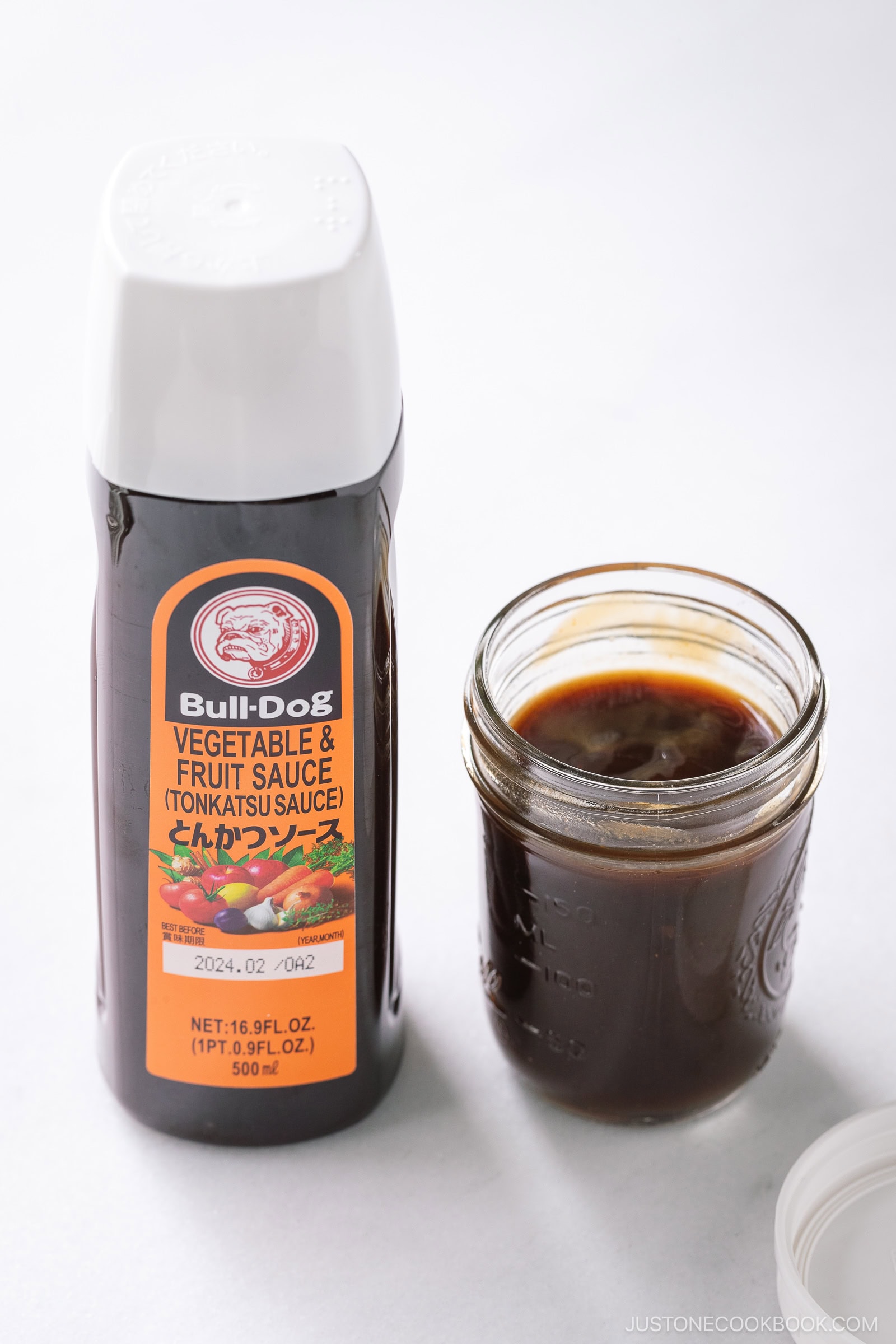
Open my fridge and you’ll find a stash of Japanese condiments and sauces. Among them is my Homemade Tonkatsu Sauce. I love this shortcut recipe because it tastes just as complex and delicious as bottled sauce! I’ll show you how to whip up a batch in just 5 minutes to serve with Japanese fried pork cutlets, chicken katsu, and other Japanese foods.
If you love making Japanese sauces from scratch, try my Homemade Yakisoba Sauce and Homemade Okonomiyaki Sauce next!
What is Tonkatsu Sauce?
Tonkatsu sauce (とんかつソース) is a popular Japanese condiment that’s traditionally made from fruits and vegetables like tomatoes, prunes, and apples, plus soy sauce, vinegar, and Asian spices. It’s simmered down to a glaze consistency that’s much like a thick and rich Japanese version of Worcestershire sauce. Its tangy, umami flavor lends well to breaded and fried foods like Tonkatsu (Japanese deep-fried pork cutlet), Chicken Katsu, and Japanese Croquettes (Korokke).
Table of Contents
Why This Recipe Works
- Make as much or as little as you need – Once you learn the ratio of ingredients, you can make a small portion to use now or a large batch to store for later.
- Simple, four-ingredient sauce – While traditional tonkatsu sauce is labor intensive, my recipe achieves a similar flavor with just a few pantry staples that you can find in any grocery store.
- A versatile sauce recipe – Its layers of flavor make it perfect to pair with tonkatsu or use as an ingredient in other recipes like Japanese Hamburger Steak.
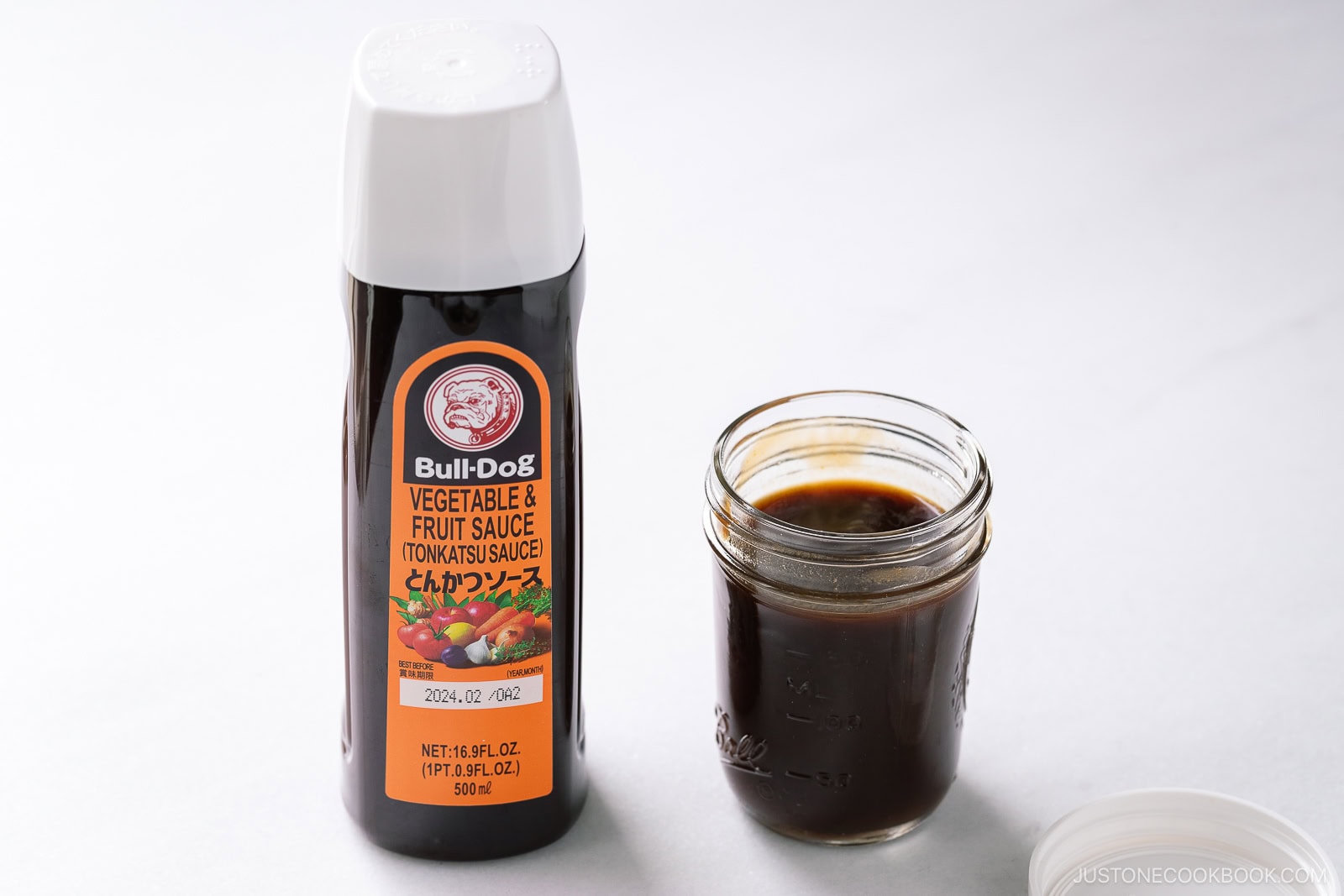
Ingredients for Homemade Tonkatsu Sauce
- Worcestershire sauce
- Sugar
- Ketchup
- Oyster sauce
Find the printable recipe with measurements below.
Jump to RecipeSubstitutions
- Worcestershire sauce: I use Lea & Perrins brand, though you can expect similar results with any brand. If you’re vegan, I recommend using a vegan Worcestershire sauce.
- Sugar: You can use either white or brown sugar. I often prefer brown sugar because it adds a layer of molasses flavor.
- Ketchup: The sweetness of ketchup varies, so be sure to taste the sauce and adjust the amount of sugar you add.
- Oyster sauce: If you’re vegan, I suggest using Lee Kum Lee Vegetarian Stir-Fry Sauce.
How to Make Homemade Tonkatsu Sauce
Preparation
Step 1 – Dissolve the sugar in the Worcestershire sauce. Whisk in a small bowl or jar until the sugar dissolves.
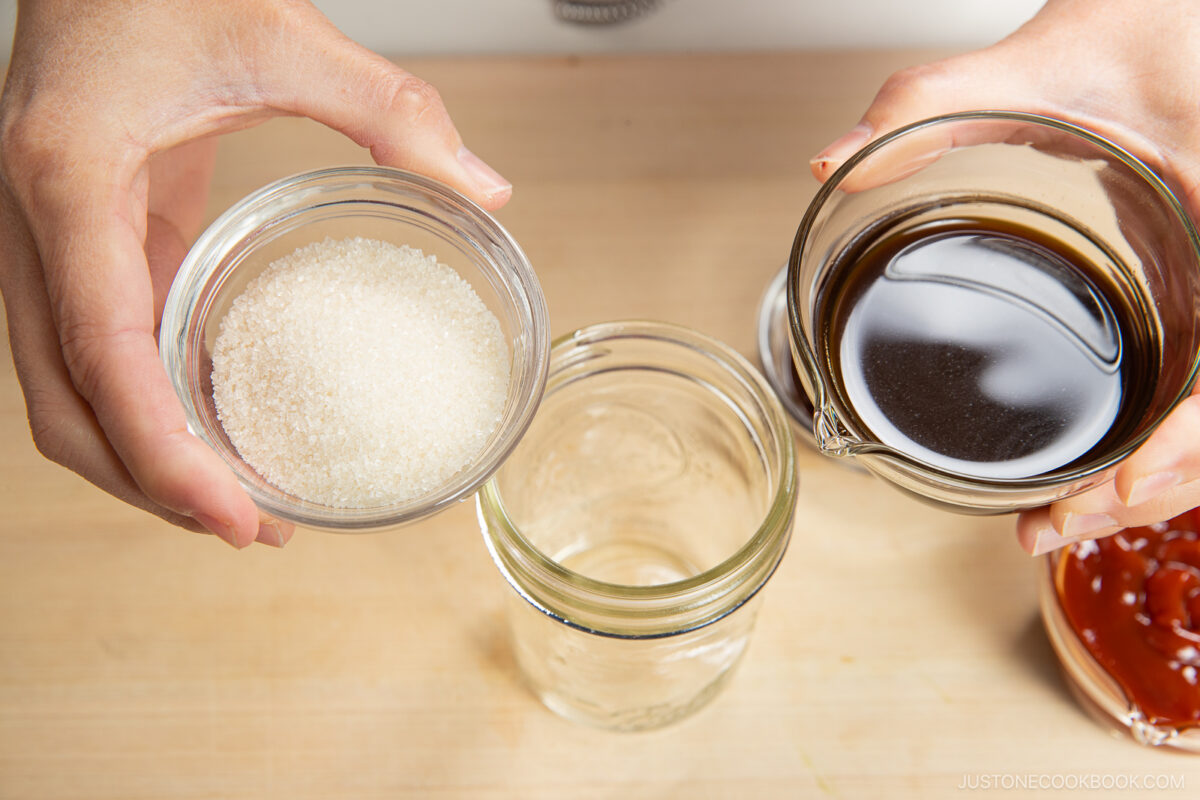
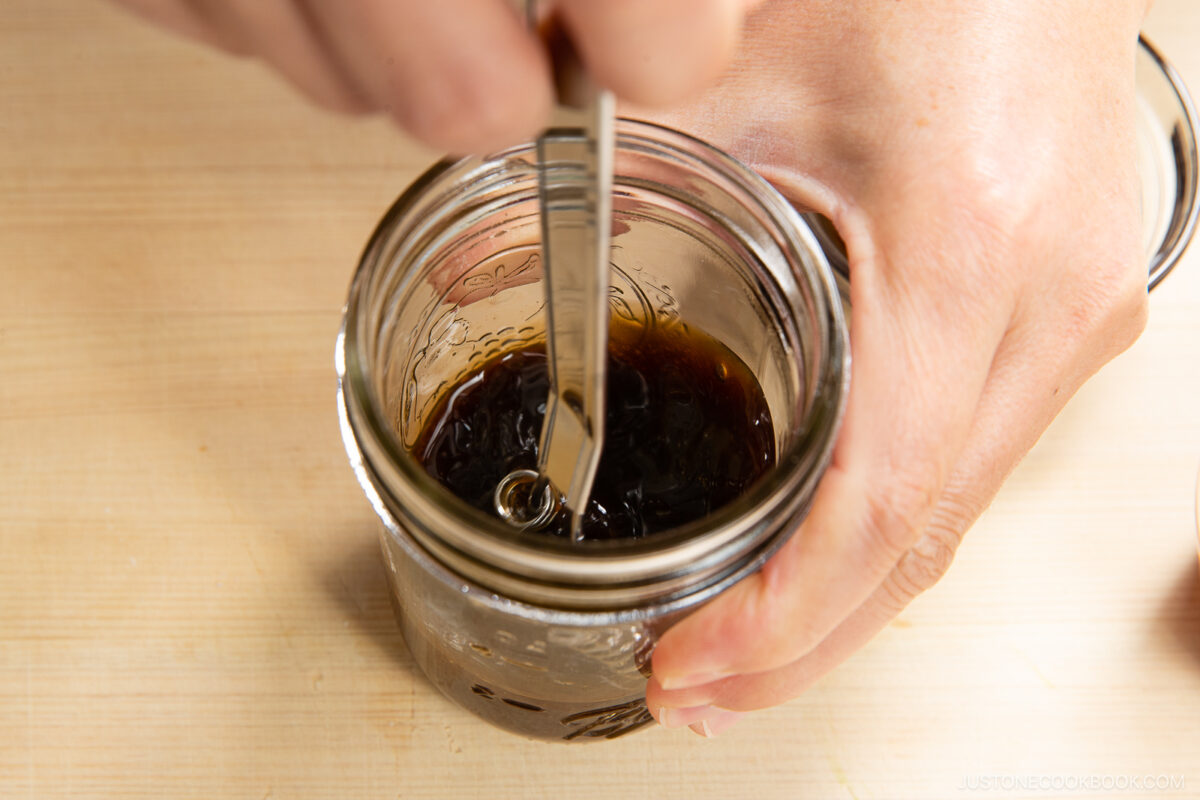
Step 2 – Add the ketchup and oyster sauce. Whisk until smooth and combined. Use immediately or refrigerate in an airtight container.
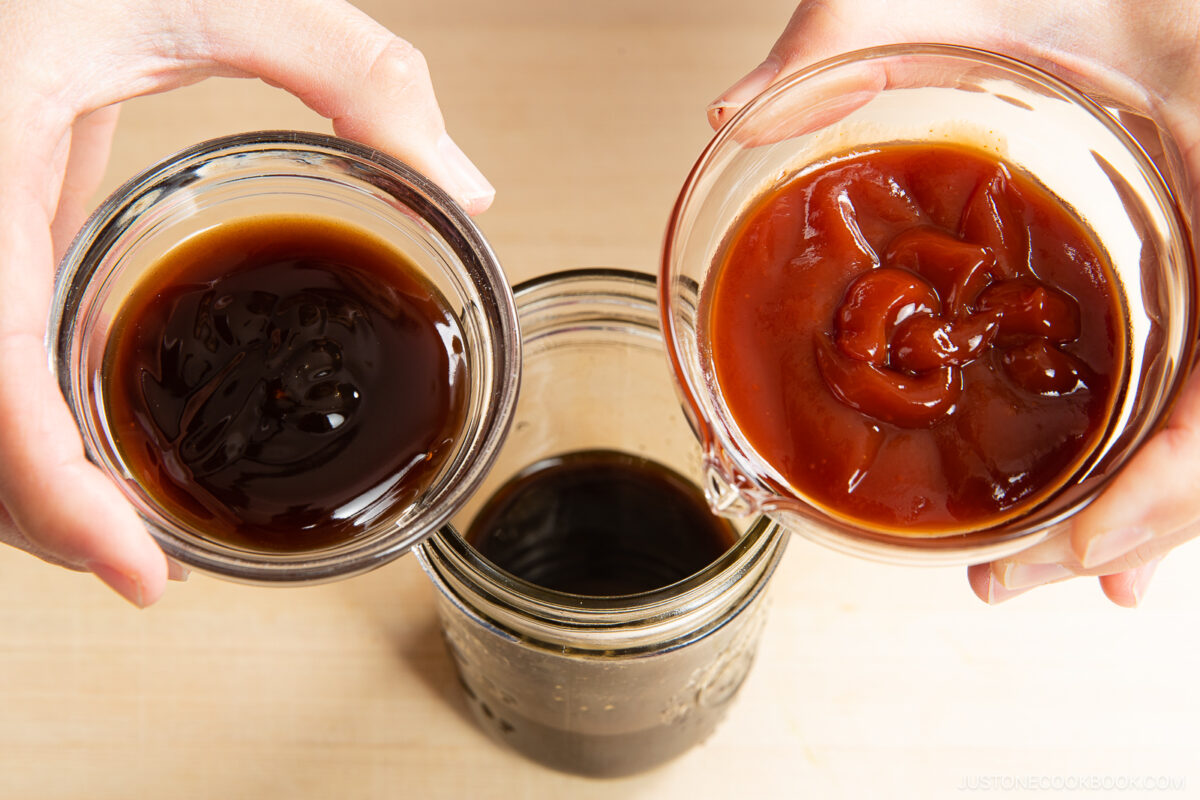
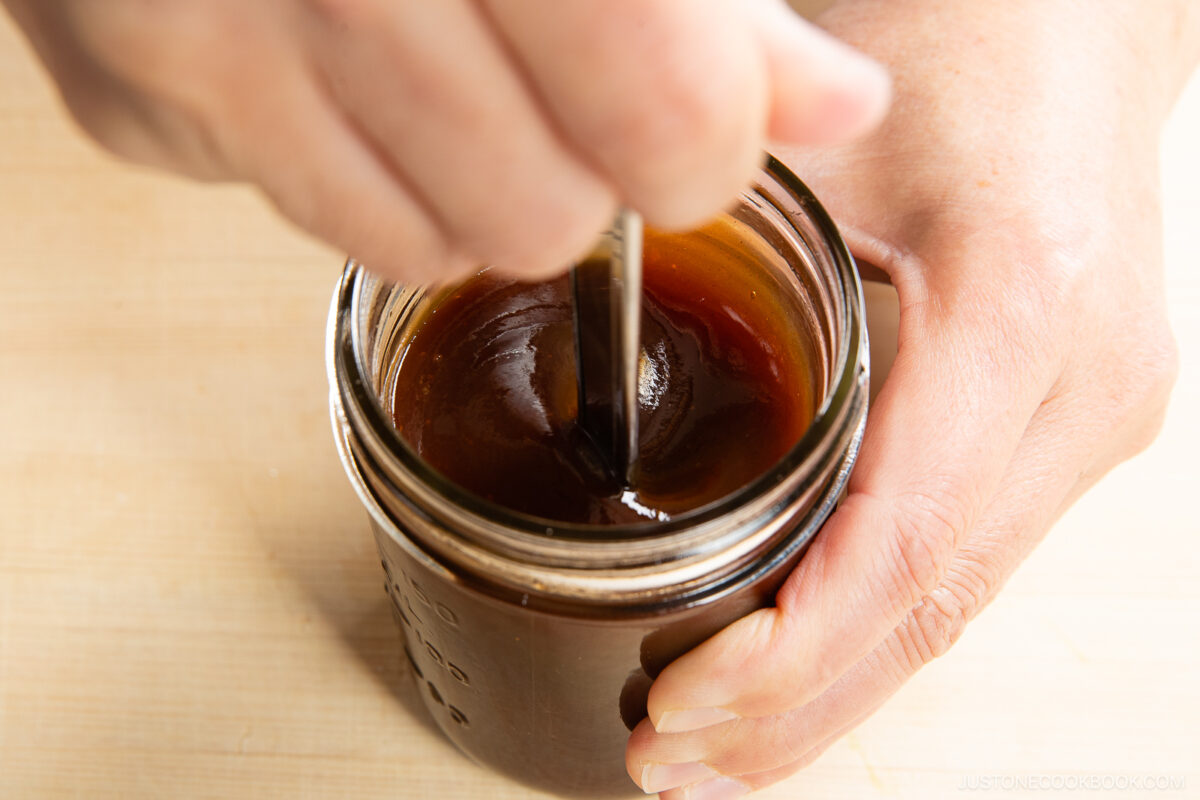
Nami’s Recipe Tips
- Chill the sauce before using – I often make it right before serving, but if you let the sauce chill in the fridge for at least 30 minutes, you’ll notice it thickens up quite a bit.
- Adjust the sweetness – Before using the sauce, I taste it first so I can add more sugar or other flavorings as needed.
Variations and Customizations
- Make it gluten-free. Swap GF Worcestershire sauce and GF oyster sauce for gluten-free.
- Add fresh garlic or ginger. To enhance the aromatics and give the sauce more flavor, whisk in ½ tablespoon of freshly minced garlic and/or ginger.
- Stir in dry spices. For added complexity, whisk in ¼ teaspoon of garlic powder, onion powder, or ginger powder until dissolved.
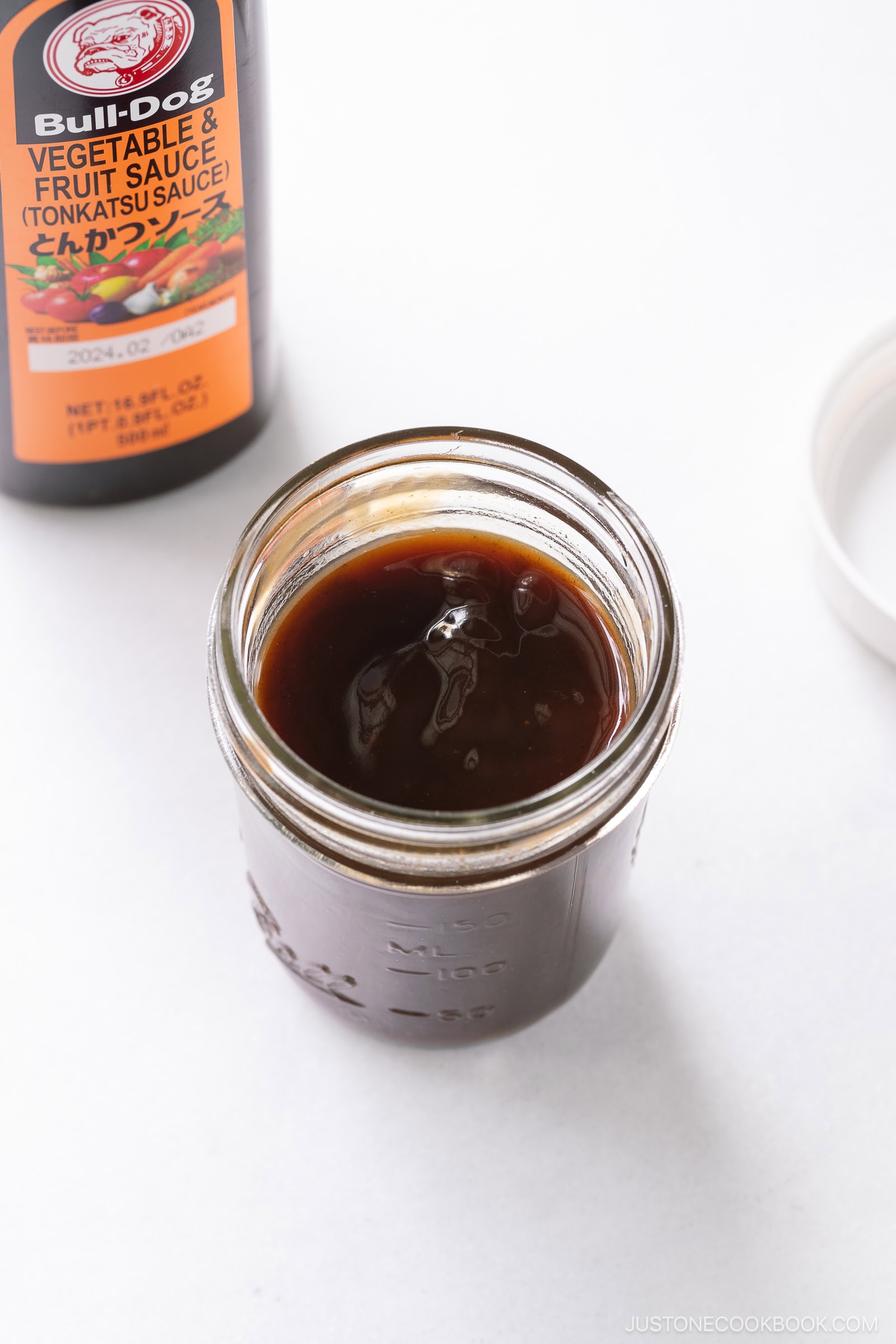
Delicious Ways to Use Tonkatsu Sauce
Although it’s named for the fried pork cutlets, this sauce is a versatile condiment with uses in many dishes. Here are a few of my suggestions.
- With the main course – Instead of deep-fried cutlets, try my delicious Baked Tonkatsu.
- As a sandwich spread – Serve it on a Katsu Sando or Ebi Katsu Burger to add moisture and an extra layer of flavor.
- As a dipping sauce – Pair it with Chicken Cheese Katsu for essential acidity and a rich savoriness.
- As an ingredient in other recipes – It’s a (not-so) secret seasoning in my Keema Curry recipe!
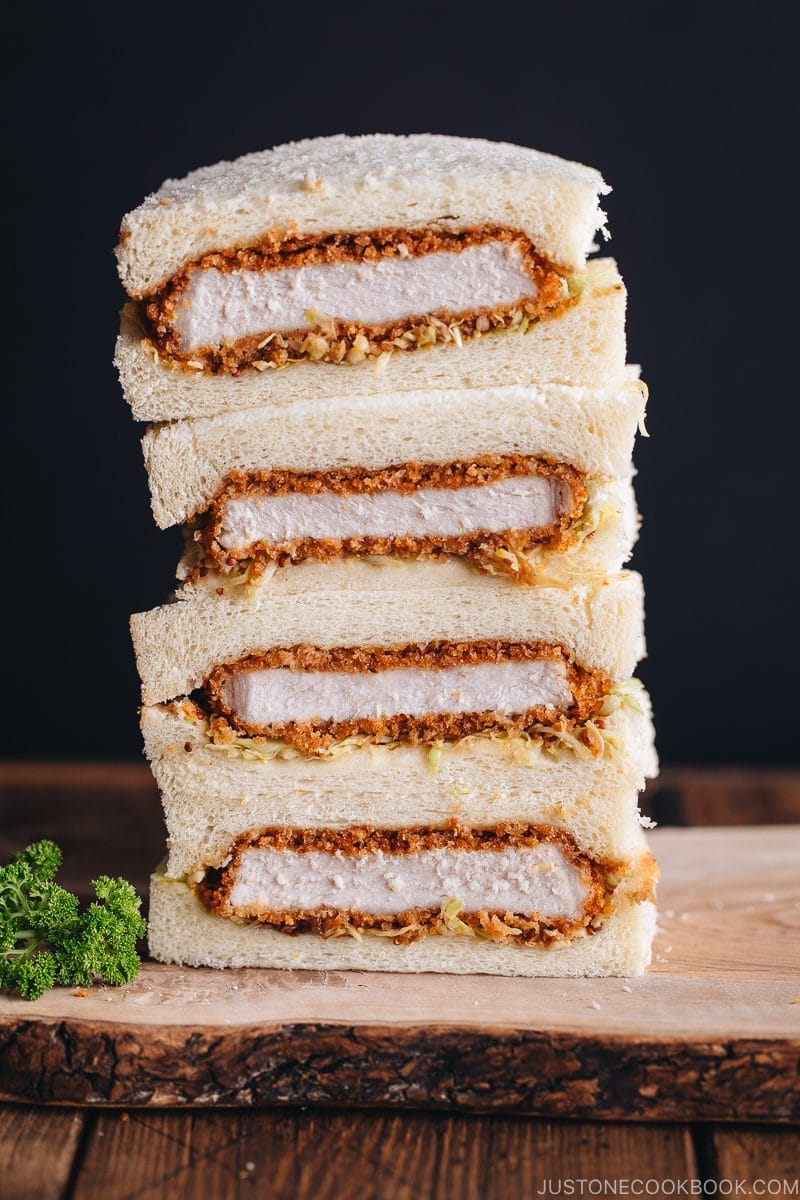
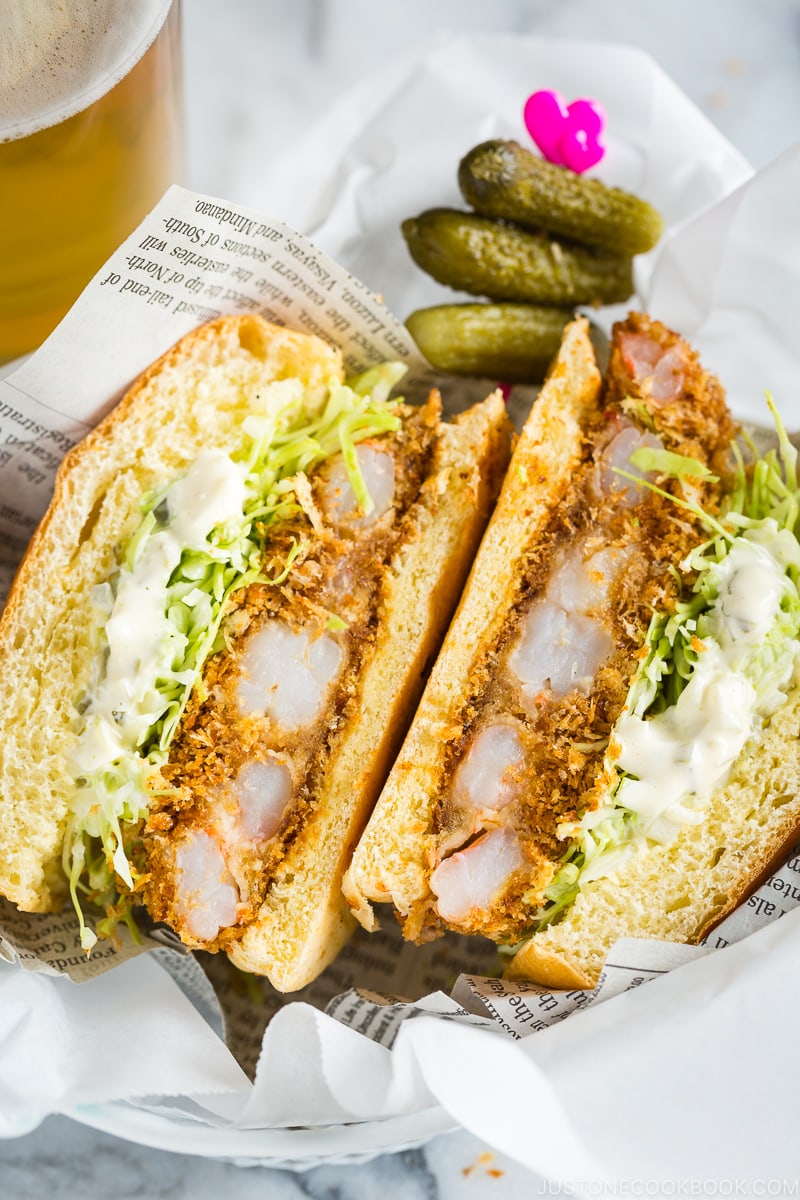
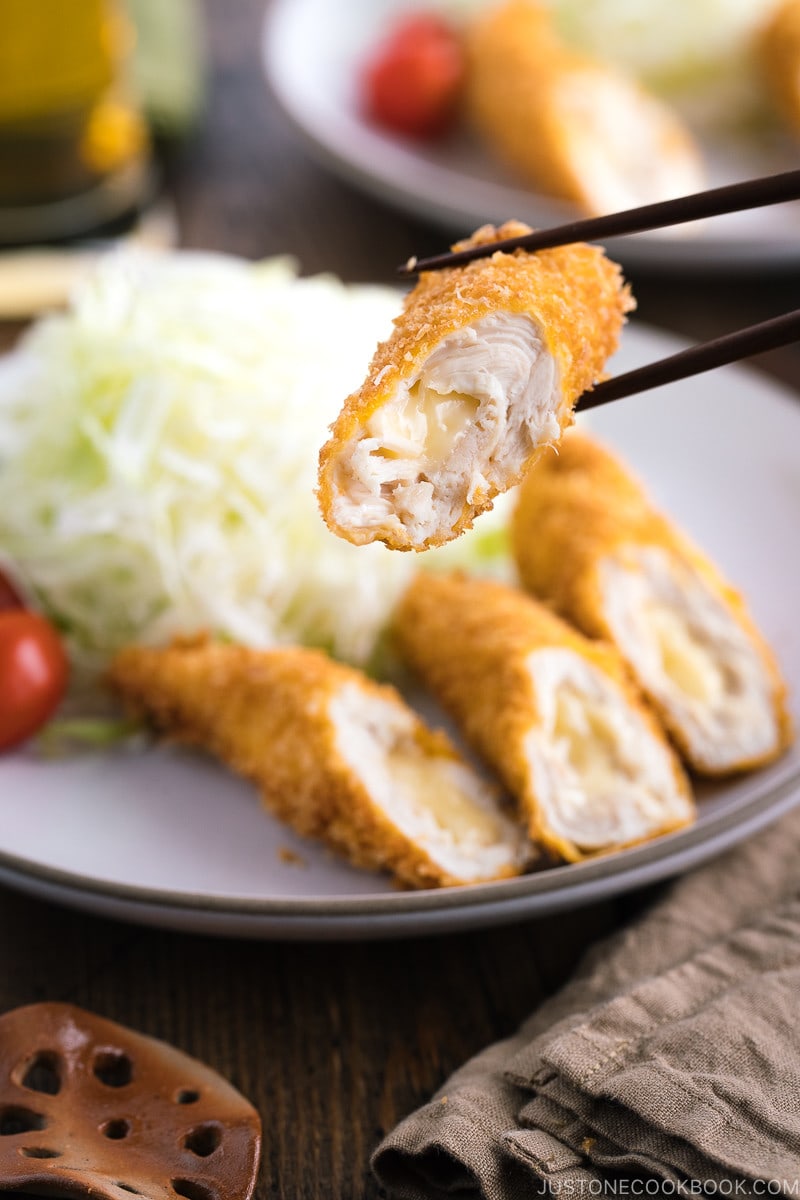
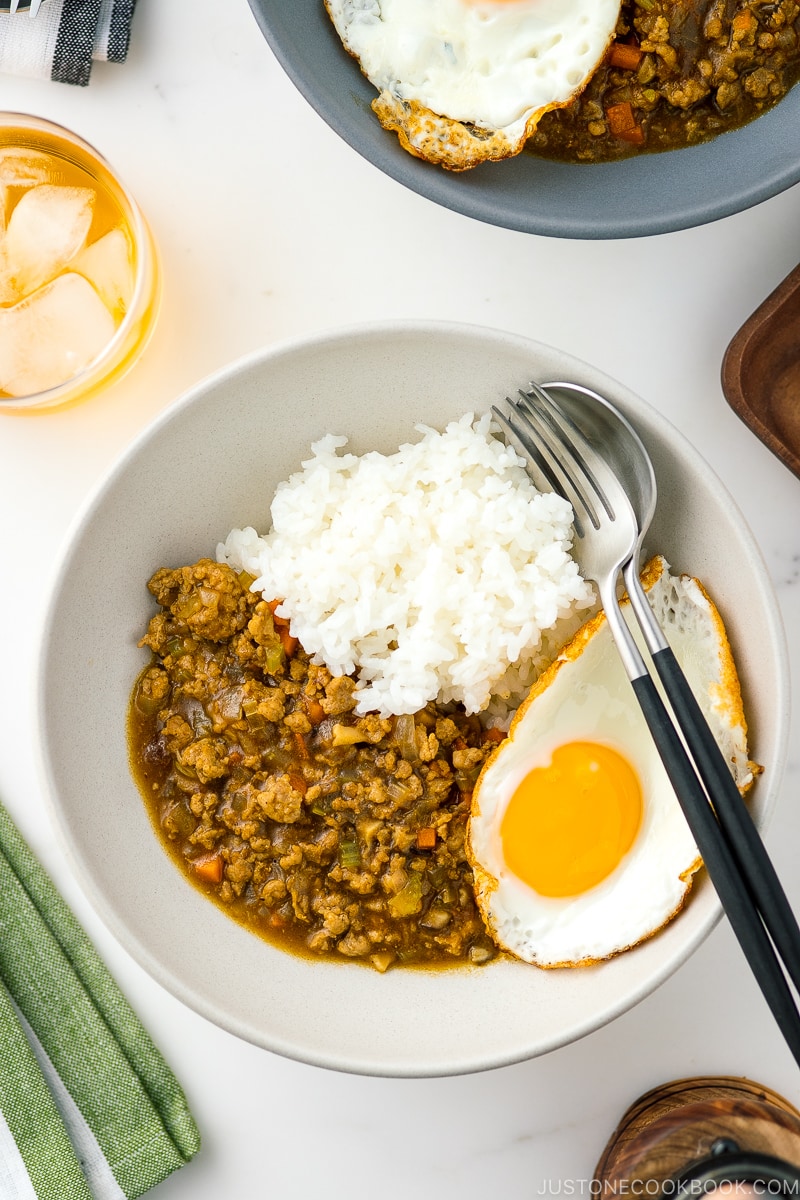
Storage Tips
To store: You can keep the leftover sauce in an airtight container in the refrigerator for up to 2–3 weeks or in the freezer for 3–4 months. Let it thaw completely before using.
Frequently Asked Questions
There is no difference between tonkatsu and katsu sauce. It is two names for the same sauce.
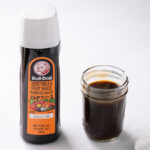
Homemade Tonkatsu Sauce
Video
Ingredients
- 4½ Tbsp Worcestershire sauce (use vegan Worcestershire sauce for vegan)
- 2 Tbsp sugar (plus more to taste)
- 5 Tbsp ketchup
- 2 Tbsp oyster sauce (use Lee Kum Kee Vegetarian Stir-Fry Sauce for vegetarian or if you‘re allergic to shellfish)
Instructions
- Gather all the ingredients. I included a bottle of Bull-Dog Tonkatsu Sauce in the image, but it‘s not needed for this recipe.
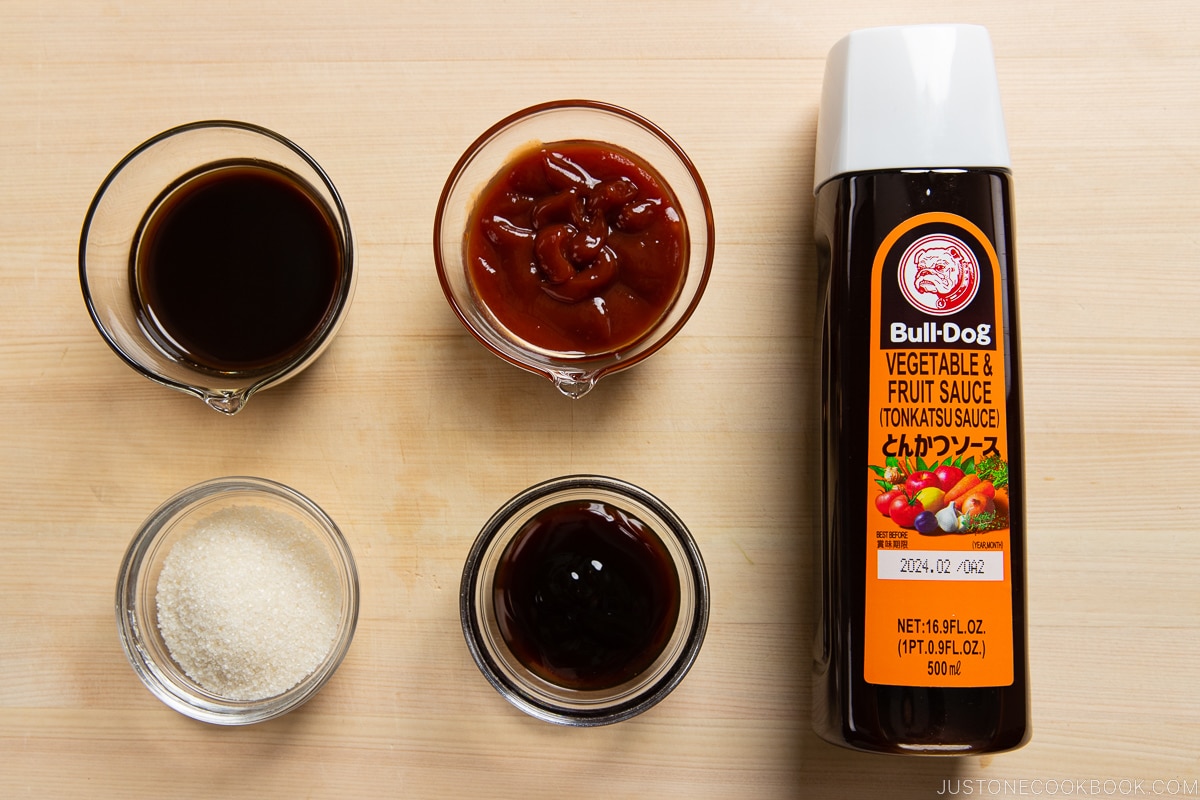
- In a jar or small bowl, combine 4½ Tbsp Worcestershire sauce and 2 Tbsp sugar. Whisk well until the sugar is completely dissolved.
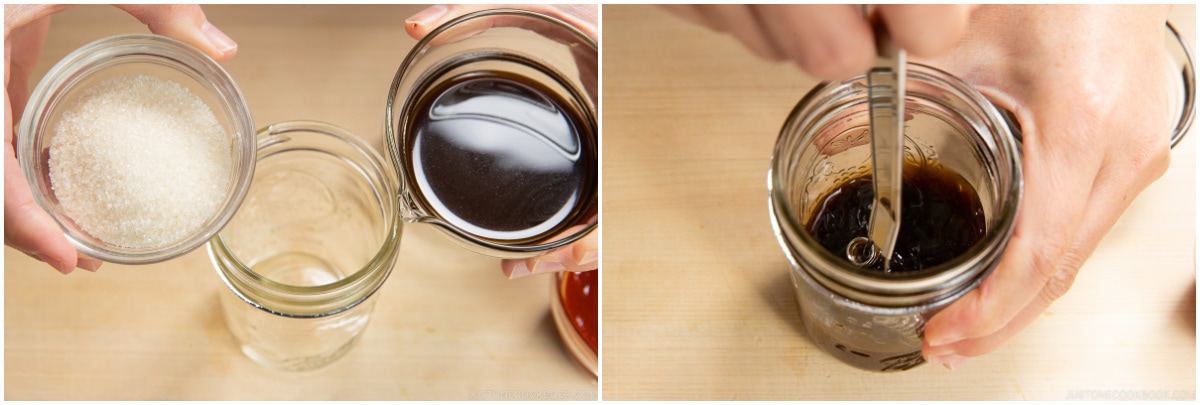
- Then, add 5 Tbsp ketchup and 2 Tbsp oyster sauce and whisk until combined. Taste the sauce and adjust the seasoning. Some ketchup is sweeter than others, so please adjust the amount of sugar to taste. It's now ready to use.
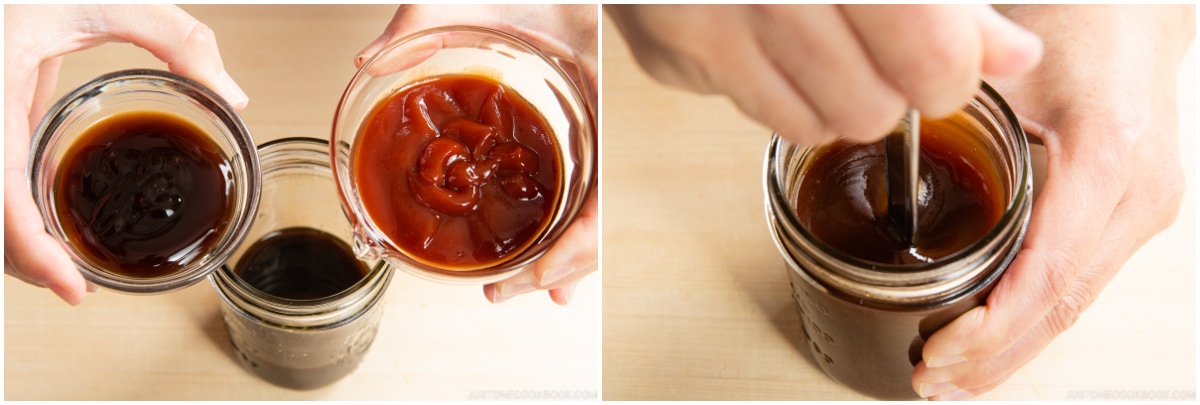
To Serve
- Enjoy this sauce as a condiment for breaded and/or deep-fried Japanese foods like Tonkatsu, Chicken Katsu, and Korokke (Potato and Meat Croquette) or their baked versions Baked Tonkatsu, Baked Chicken Katsu, and Baked Croquette. Tonkatsu sauce is also an ingredient in recipes like Japanese Hamburger Steak (Hambagu), Keema Curry, and Meat Doria (Rice Gratin).
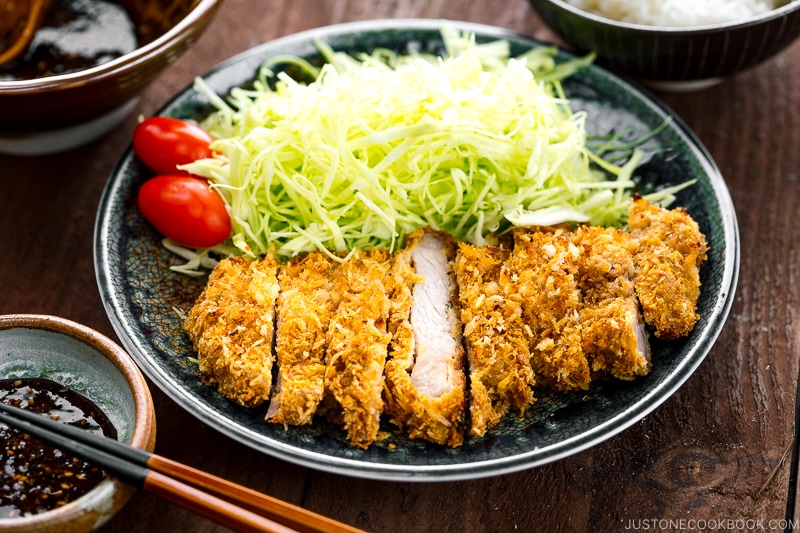
To Store
- Store in an airtight container and keep in the refrigerator for up to 2–3 weeks or freezer for 3–4 months.
Equipment
Nutrition
Editor’s Note: The post was originally published on January 27, 2014, and was updated with more helpful content and new images in February 2023. It was republished with a new video on February 16, 2024.
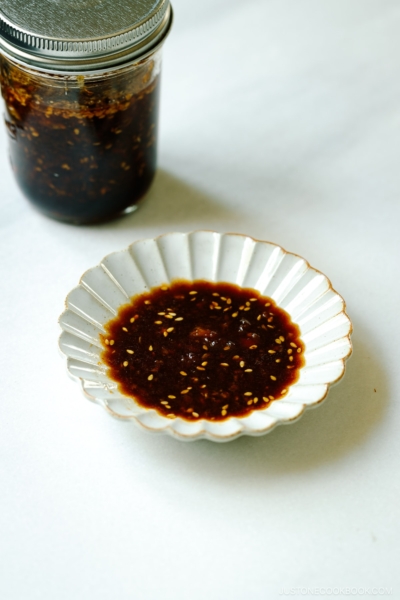
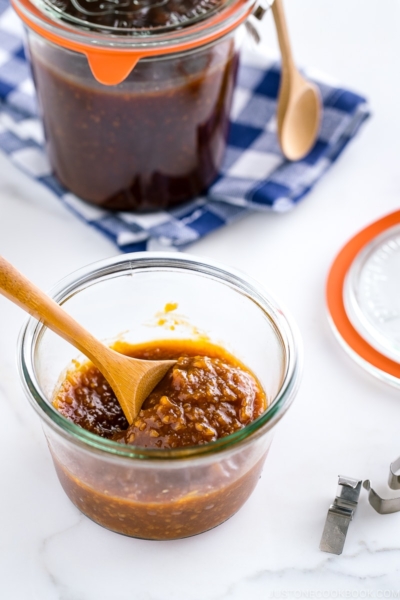
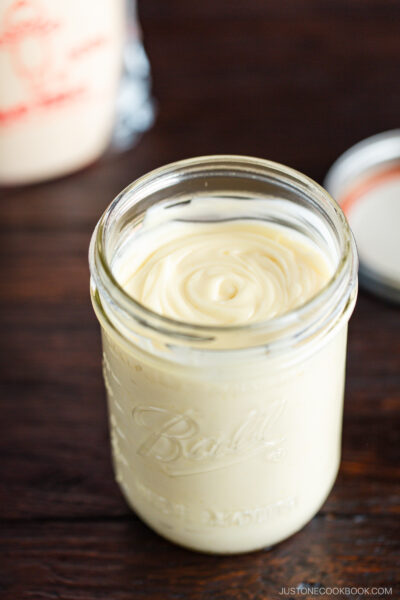
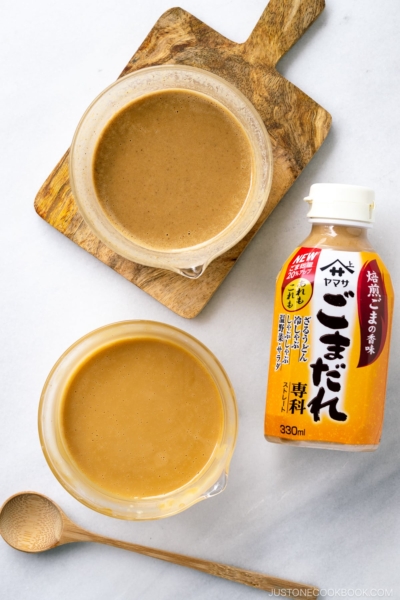




I just tried this recipe as I didn’t have the sauce at home. I’m now never buying this sauce again – This recipe is so simple and awesome! 🙏
Hi Ronald! Aww. We are so happy to hear you enjoyed Nami’s recipe!
Thank you for trying her recipe and for your kind feedback. Happy Cooking! 🤗
Love this!! My go-to chef/cookbook for ANYTHING Asian. Just wanted to share some additions/substitutions I did for anyone interested.
I was out of Oyster sauce so I did 10g Hoisin Sauce, 8g Fish sauce, and 2g Black Soy Sauce. I think it worked as a pretty good substitution. I also substituted sugar for 8g Mike’s Hot Honey…added a nice little kick to the sauce with a little bit of smoothness to it. Additionally, I added 10g of a store-bought tamari mixed with red miso. I felt like this added a nice extra depth of umami.
Hello Chris! Thank you for your kind feedback and sharing your tips!
Happy Cooking!
I found this too sweet, a strong ketchup flavor. As you said all ketchups are different. So I added some more worchestire and oyster sauce, grated garlic, squeeze of lemon. Toasted sesames. Now it’s sweet and savory. Good basic recipe tho.
Hi Barb! Thank you for reading Nami’s post and trying her recipe!
My go to site for Japanese recipe hacks
Hi, Erwin! Thank you for trying Nami’s recipes.
We hope you continue to enjoy the great recipes on our website. Happy cooking!
I loved this recipe! I definitely want to find/try bulldog, but I’m glad I have this simple alternative up my sleeve. Very tasty sauce. I made with the chicken katsu sando recipe and it was delicious with the garlic and kewpie mixed in. Thank you!
Hi there! Thank you for your kind feedback! We are glad to hear you enjoyed Nami’s homemade tonkatsu sauce! 🥰
Hello Nami,
i am unable to find Vegetarian Stir-Fry sauce near me as I am making this tonight. If I only add sugar, ketchup and worchester sauce will that be ok?
Hello, Judy! Thank you for attempting Nami’s recipe.
It will be different from Tonkatsu sauce without the stir-fry sauce, but it will still be tasty. Please adjust the sugar amount to your preference.🙂
Ok thank you!!
I made my own version where instead of sugar, I used grated apple and a splash of apple cider. I think it added a nice fruity element and helped me have one less apple after apple picking
Hi Kristen! Adding the grated apple sounds delicious!
Thank you so much for experimenting with Nami’s recipe and sharing your results with us. Happy Cooking!
I just finished making this sauce for baked tonkatsu, and wow! It is so good! Also it was so easy to make. Thank you for this!
Hi Tiffany! Thank you! We are so happy to hear you enjoyed Nami’s homemade sauce recipe! 🤗
This is so easy and tasty! I added a splash of mirin, perfect!
Hi Susie! Thank you so much for your 5 star rating!
We are so happy to hear you enjoyed Nami’s recipe! Happy Cooking!🤗
So good!! My kids are obsessed with Bulldog sauce but occasionally we run out. I had tried a different DIY Tonkatsu Sauce previously but it was met with overall thumbs-down. Followed your recipe tonight for our tonkatsu dinner and it was a hit! I only added 3 1/2 Tbsp of ketchup but kept other 3 ingredients as written. I will be tripling this recipe and keeping a jar in the fridge! THANK YOU!
Hi Emily! Wow! We are so happy to hear that you and your family enjoyed Nami’s Tonkatsu Sauce recipe!
Thank you so much for trying her recipe and for your kind feedback. ☺️
I made this last night for dinner. It was super quick and easy! It was also delicious and was gobbled up so fast I didn’t get pictures! We will definitely have this again soon! I will add toasted sesame seeds on the side of the homemade tonkatsu sauce next time! Just as an aside, I prepped everything and then put the plastic covered platter of breaded pork in the frigerator for about an hour while I did other things. The crunchy breading stayed on perfectly when fried and also while cutting. Such a delight! Thank you for this recipe!
Hi Yvonne! Thank you so much for trying Nami’s recipes and for your kind feedback!
We are so glad to hear you enjoyed homemade Tonkatsu with homemade sauce! Happy Cooking! 🤗
I made this recipe, tonkatsu sauce and sesame dressing recipes and I must say, they are just amazing. I specifically love your sesame dressing. It has just the right amount of acidity and creamy to me. Thank you so much! I am excited to try to other ones soon.
Hi Tam! Thank you for trying Nami’s recipe and sharing your Tonkatsu photo and review!
We’re thrilled to hear you loved her recipes!
Your Tonkatsu looks amazing! 😃
If I’m using Japanese Worcestershire sauce (which I bought on Amazon), should I change up anything in the recipe? I’ve used your recipe numerous times with Lea & Perrins and Jufran spicy banana sauce instead of tomato ketchup and we LOVE it. We haven’t done a taste test yet comparing American to Japanese Worcestershire yet but we will 🙂
Hello Nick! Thank you for giving Nami’s recipe a try!
Nami used the Lea & Perrins brand in this recipe, and the flavor and taste are based on that. While Japanese Worcestershire sauce can be used for this recipe, the flavor and taste may differ depending on the brand. So, feel free to adjust the sweetness or vinegary flavor to your liking.
We hope this information is helpful!